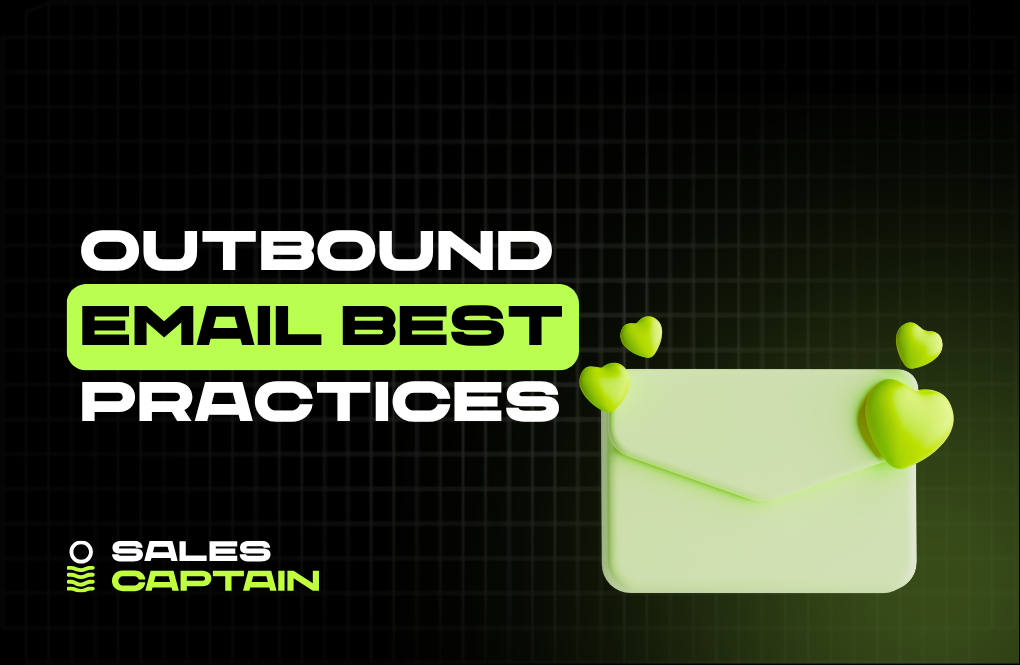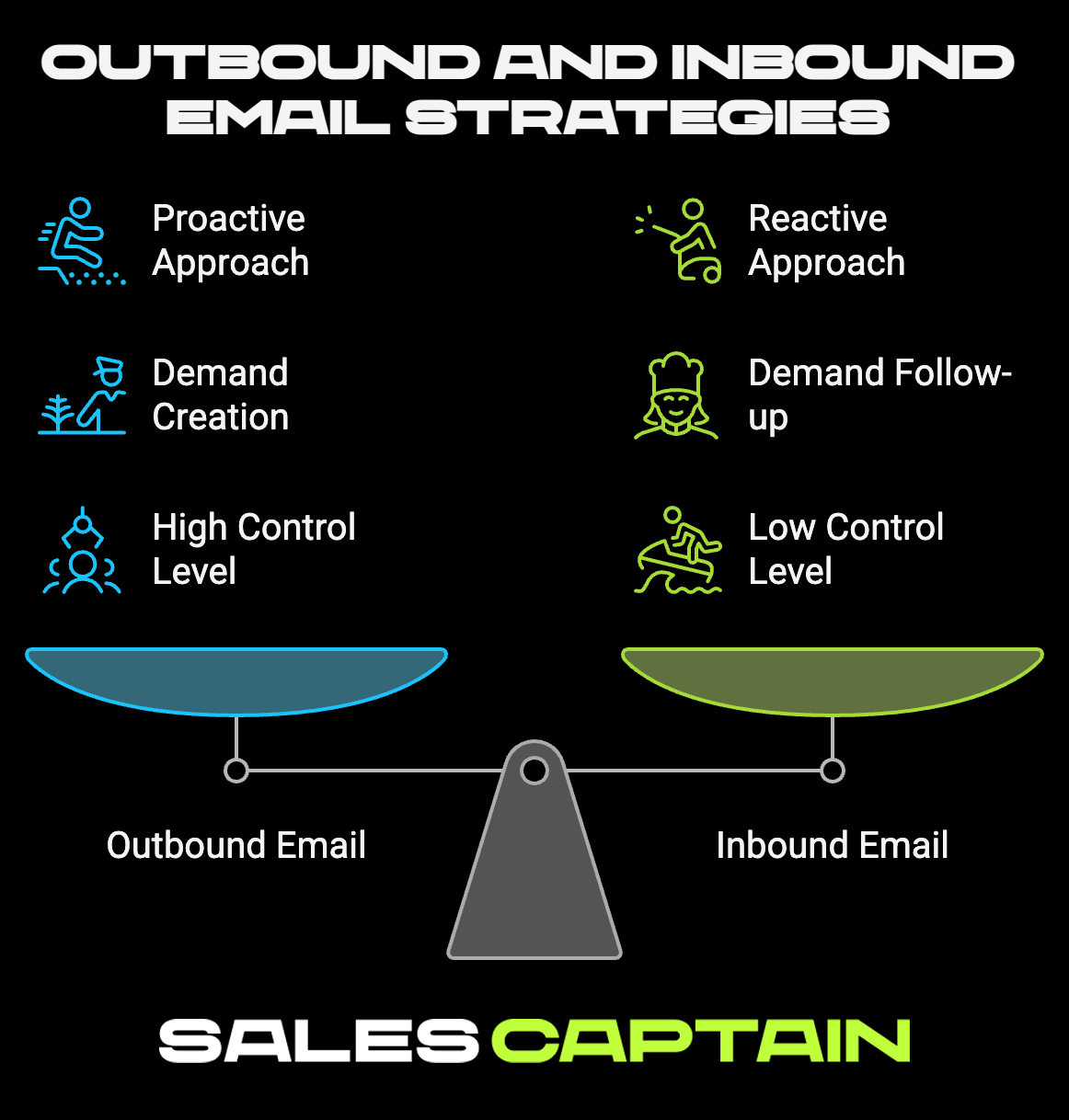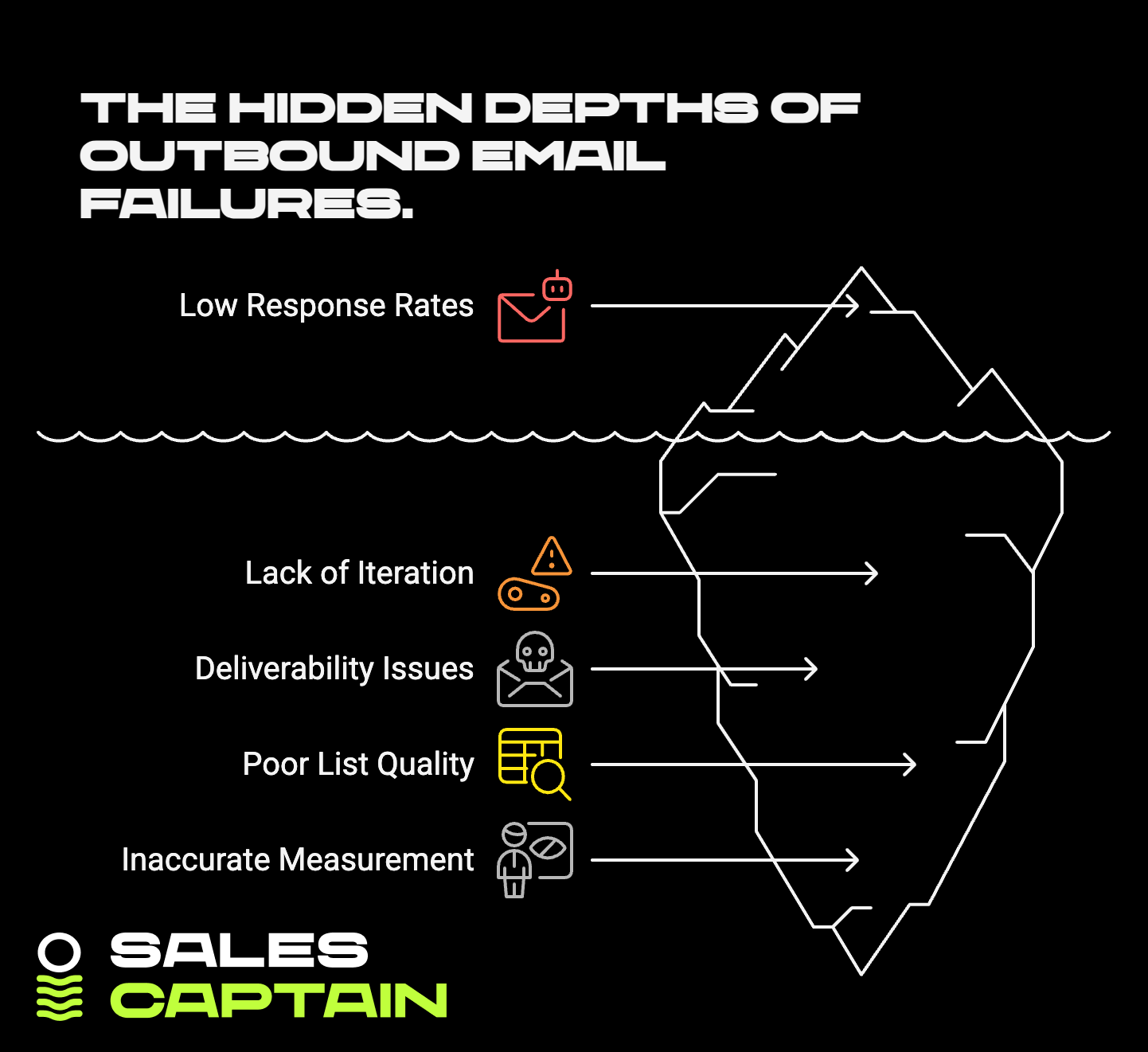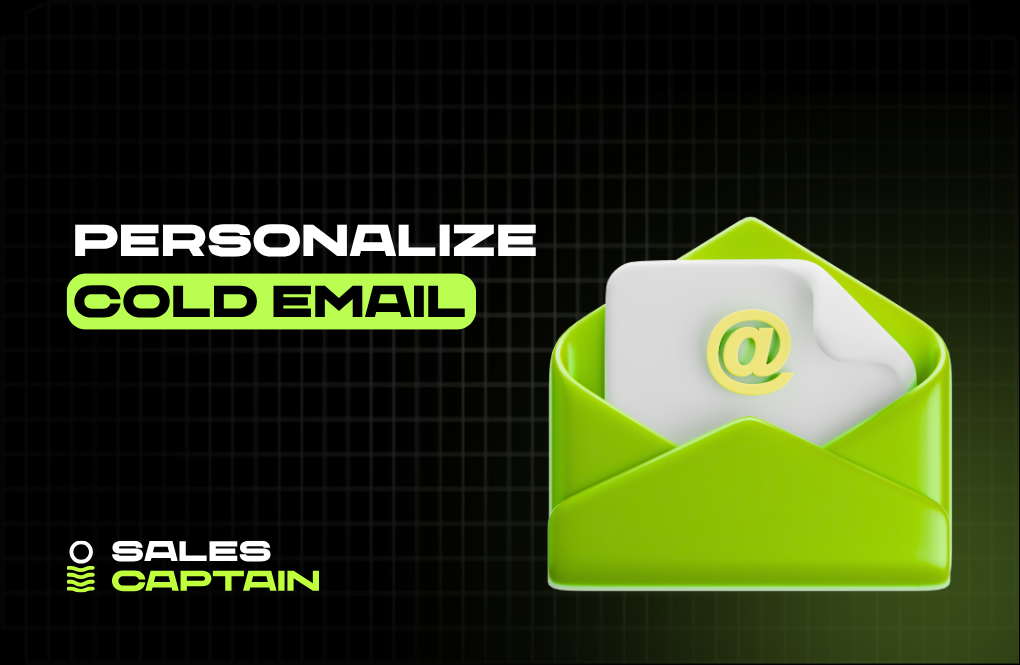

Outbound Email Best Practices 2025: How to Get Replies and Avoid Spam


What is Outbound Email?

Definition and Purpose
Outbound email is where your go-to-market engine gets proactive. You’re not waiting around for leads to come in; you’re choosing exactly who to target, when, and with what message. It’s manual control, automated at scale.
At its core, outbound email is any cold or warm email message you send to a prospect who hasn’t asked you to reach out. It's used to start conversations, book meetings, build a pipeline, or create awareness in high-value accounts.
But this isn’t just sales anymore. Outbound has evolved into a marketing motion, too. It’s about precision messaging, fine-tuned signals, scalable personalization, and integrated go-to-market workflows, not just a rep with a CSV file and a Gmail plugin.
Outbound vs Inbound Email: Key Differences
Inbound is reactive. A prospect fills out a form. Downloads a whitepaper. You follow up.
Outbound is proactive. You go find the prospect before they find you.
Inbound works well when you’ve already built strong demand. Outbound creates it. You control who sees your message, when they see it, and what it says.
Think of outbound like running ads to one person, hyper-personalized messaging to an exact-fit decision-maker at a target account. For early-stage startups or category creators, outbound often outperforms inbound simply because there’s no search demand yet.
Why Outbound Email Still Works in 2025 and Beyond
Outbound isn’t dead. It’s just different.
In fact, it’s more powerful than ever. Why? Because you can now pair AI, data, signals, and automation to create smarter outbound systems.
No more blasting. Now it’s about timing, personalization, and relevance, at scale. Playbooks today are built using tools that scrape intent signals, enrich profiles with behavioral data, and auto-write email copy with context baked in.
Used right, outbound becomes a demand gen lever, not just a meeting setter.
And with SDRs being phased out by technical GTM operators, companies are building programmatic outbound machines powered by platforms like Clay and orchestrated by agencies like SalesCaptain.
Outbound is no longer a grind. It’s an asset.
Warm vs Cold Outreach: Key Use Cases
Cold outreach means you're emailing someone who has no clue who you are. No engagement. No prior conversations. Just a well-researched hypothesis that they might be a good fit.
Warm outreach, on the other hand, leverages some form of prior signal. Maybe they visited your pricing page. Liked a post on LinkedIn. Attended your webinar. You’re tapping into real buying intent, not just a job title.
Cold works best for new market entry, category creation, hand-picked enterprise accounts, or outbound ABM.
Warm is ideal for retargeting inbound leads that ghosted, re-engaging pipeline that's gone cold, or following up on content interactions with timely, relevant messaging.
One isn’t better than the other, but knowing which to use when is what separates spam from strategy.
Building the Foundation for an Effective Outbound Strategy
Define Your Objectives and KPIs
Without clear KPIs, outbound becomes guesswork. You’ll burn domains and budgets chasing vanity metrics.
Start by defining your core goal. Is it meetings booked? Pipeline sourced? Revenue closed? Each one requires different tactics and touchpoints.
Then, layer supporting metrics: open rates, reply rates, positive replies, meeting rates, conversion to SQL or closed-won. Track by persona, by segment, by campaign.
Outbound is just a workflow; your metrics are the feedback loop.
Identify and Understand Your Ideal Customer Profile (ICP)
The tighter your ICP, the less email you need to send. Spray and pray belongs in 2010. Precision targeting is where pipeline gets profitable.
Start with firmographics (industry, company size, funding stage), then layer psychographics (pain points, motivations, buying behavior). The best outbound campaigns speak to one type of person, not everyone with a VP title.
TAM, SAM, SOM for Market Sizing
TAM (Total Addressable Market) tells you how big the whole opportunity is. SAM (Serviceable Available Market) narrows it down to who you can realistically serve. SOM (Serviceable Obtainable Market) cuts further to who you can reach now.
Use this framework to prioritize segments for outbound. Focus your initial efforts on high-conversion sub-segments, the SOM, and expand as you validate messaging.
Using Intent and Behavioral Signals
Not all ICPs are ready to hear from you. That’s where signals come in.
Look for buying intent: job changes, tech stack installs, recent funding, public hiring for specific roles. Behavioral signals like profile visits or content engagement can trigger outreach.
Tools like Clay let you combine ICP filters with live signals to build action-ready lead lists programmatically.
Match your message to the signal. Timing isn’t everything; it’s the only thing.
Build and Segment Your Prospect List
Even with the best message in the world, the wrong list is still the wrong list.
Start by building segments, not just a giant file. Break out personas, industries, company tiers. Segment by buying stage or intent level.
Keep your messaging modular, so the same campaign can speak differently to a VP of Operations than a CTO.
Finding Verified Email Addresses
Never guess. Guessing gets you spam-listed.
Use tools that prioritize deliverability, verified work emails only. Avoid scraped or outdated info. Double-check domain formats and run email checks before hitting send.
Tools and Resources to Find Leads
Clay is the first tool you should explore. It turns APIs, websites, and scraping into a visual lead-building system. You can filter by company data, signal triggers, and even custom logic.
Other tools like Apollo, Clearbit, or LeadIQ can supplement or integrate upstream. But Clay wins when you need flexible logic and workflow-level customization.
For technical operators running modern GTM, Clay is an unfair advantage.
Set Up the Right Infrastructure
Infrastructure is the difference between a scalable outbound engine and a broken system that lands you in spam.
You need the right technical groundwork, domain setup, warmup, authentication, and hygiene. Poor infrastructure kills deliverability, no matter how good your copy is.
Register a New Domain and Warm It Up
Never send cold emails from your main domain. Set up a subdomain (like hello.yourcompany.com) for outbound. This protects your primary domain’s reputation.
Use warmup tools that simulate conversations and slow ramp your sending volume. Skip this, and your first campaign could be your last.
Ensure Deliverability (SPF, DKIM, DMARC)
These three protocols tell inbox providers: yes, we’re legit.
SPF verifies the sender’s mail servers. DKIM ensures the email content wasn’t spoofed. DMARC ties everything together for policy and enforcement.
Without all three properly configured, your emails risk the spam folder, or never landing at all.
Maintain a Clean Email List
Unverified contacts, high bounce rates, or spam reports will quickly tank your reputation.
Always clean your list before sending. Regularly prune non-responders after each sequence. Treat list health like email hygiene, a daily habit, not an annual fix.## Leveraging Tools and Automation
Choosing an Outbound Email Platform
Outbound only scales if the tools do. You’re not just picking an email sender, you're building a system.
The right platform doesn’t just automate sequences, it connects with your data, adapts to your workflows, and gives visibility into what’s working. Whether you're a solo operator or managing an SDR pod, the tool should let you move fast and make changes without breaking the stack.
Features to Look For
- Native or easy CRM integration
- Conditional logic (if user replies, pause the sequence)
- Smart sending windows and throttling
- Built-in A/B testing
- Domain-level reporting
- Support for variables and dynamic text blocks
- Easy-to-use editor for branching templates
Platforms like Instantly, Smartlead, and Apollo are popular for basic campaign building. But if you’re running complex workflows or integrating signals from dozens of sources, you're better off using something modular that plugs into your GTM engine.
Clay isn’t an email sender itself, but it pairs with your outbound stack to power smarter decisions before the first email ever goes out. Think of it as an upstream engine for your outbound platform, feeding it better contacts, better data, and better timing.
Integrating with Your CRM and Sales Tech Stack
Disconnected tools kill momentum. If your email platform sits in a silo, you lose vital context, reply history, deal stage, lead source, and reps end up flying blind.
Sync your outbound engine with your CRM. Not just one way. You want bi-directional sync that adds replies and bounces back into the contact record, triggers lead status changes, or updates pipeline stages automatically.
Ideally, actions in your CRM should also trigger sends, like an MQL tag kicking off a warm sequence. Or a closed-lost lead re-entering based on new buying signals.
This is why outbound has become a marketing motion too. It’s no longer “just email.” It’s system design.
Using Templates Without Sounding Robotic
Templates save time. But they also kill replies if they sound like templates.
Start modular, not static. Build a framework you can personalize by persona, industry, or signal, then plug in specific pain points, company context, or recent events.
Helpful structure: strong opener (context + reason), value pitch (not features), CTA (no pressure), and a soft visual layout.
Avoid fake personalization, like auto-inserting a first name or company name and calling it a day. That’s not personalization. That’s weak automation.
Even with 80 percent templated copy, the last 20 percent needs to feel handcrafted. Prospect’s job just changed? Mention it. Their company just raised funding? Acknowledge it. Be human.
Automating Follow-Ups While Maintaining Personalization
The fortune's not in the first email, it’s in the fifth.
Follow-ups should feel like natural nudges, not robotic nags. Each touchpoint should either add value or reframe the conversation, not just say “just checking in.”
Use automation to send on your behalf, but feed it signals to guide timing and content. Did they open but not reply? Clicked a link? Visited the site? Trigger the right message with relevant context.
This is where tools like Clay shine. You can layer behavioral data and create rules for outreach sequences that adapt. Missed Step 2 and changed jobs? Pause. Requalify. Adjust CTA. Then resume with a new reason to reach out.
Personalized automation isn’t an oxymoron; it’s the baseline for modern outbound.
Measuring Success and Optimizing Performance
Key Metrics to Track
Measuring is where outbound becomes a system, not just a craft. Good operators don’t just look at one campaign’s numbers. They track trends across time, personas, segments, and sequences.
Open Rate, Reply Rate, Click Rate, Conversion Rate
These four are your core signals.
- Open Rate: Signals subject line strength, send time optimization, and domain health.
- Reply Rate: The true north. A great reply rate plus low conversion? You’ve got interest, but weak positioning.
- Click Rate: Low click rate might mean your CTA’s buried or irrelevant.
- Conversion Rate: Meetings booked, demos scheduled, or SQLs, whatever “success” means to you.
Watch how these metrics move together. They tell a story over time.
Bounce and Unsubscribe Rate Benchmarks
High bounce rates = list quality or deliverability issues. Keep it below 3 percent.
Unsubscribes creeping above 1 percent? You’re off-message, too pushy, or hitting the wrong ICP.
Treat these like smoke alarms. You don’t ignore them. You fix the wiring.
A/B Testing Subject Lines, Copy, and CTAs
Outbound without testing is just guessing.
Test one variable at a time. That could be:
- Subject line: curiosity vs value
- Body copy: short and punchy vs detailed and risk-reducing
- CTA: light touch (open to chat?) vs direct close (worth 15 min next week?)
Run tests for long enough to hit meaningful sample sizes, not just five sends. And don’t just declare a winner. Look 2–3 steps downstream. Which variation leads to more replies that convert?
Small tweaks here can double your reply rate. Literally.
Analyzing What Works, and Doubling Down
The best outbound teams do less, better.
Once a sequence proves itself, freeze the copy, templatize the structure, and scale with slight adjustments by persona or industry.
Don’t chase new angles every week. Identify the winning combo, ICP, subject, CTA, timing, and go deep there first.
And look beyond reply rate. Use call outcomes and CRM tags to trace back which messages led to qualified conversations, not just replies.
Continuously Refining Your List and Strategy
Your list gets stale fast.
Job changes, funding rounds, org structure shifts, if you’re not constantly refreshing your targeting logic, you’re emailing ghosts.
Use tools that pull live data, not static databases. Review results by persona, title, and signal. Did Series A CTOs in DevOps reply more than their Series C counterparts? Time to pivot your TAM.
Outbound isn’t “set and forget.” The winning teams treat their GTM like a flywheel. Every send is input for a smarter next step.
Advanced Tactics and Trends in Outbound Email
Personalization at Scale Using AI
Personalization used to mean hand-typing 50 intros a day.
Now, AI can scan a LinkedIn profile, cross-reference recent activity, and generate a paragraph of context in seconds.
The key? Don’t let AI write your entire email. Let it generate the insight, then you fine-tune for tone and accuracy.
The best operators use AI to scale research, not voice.
Clay’s AI integrations let you pull context at the contact level, like highlighting role changes or showing recent job posts from the prospect’s company, and inject it straight into templates. That’s how you get 100 personalized emails in under 30 minutes.
Intent-Based Outreach
Outbound is no longer just title-matching. It's signal-matching.
If someone just installed a tool you integrate with? Perfect moment. If they posted about a pain you solved? That’s your hook.
Intent data flips outbound from volume-first to timing-first. You’re reaching out when the door’s already cracked open.
Modern stacks let you trigger outreach based on:
- Website visits (pages viewed)
- Tech installs or removals
- Job postings
- Funding rounds
- Content engagement
This is how outbound becomes a demand gen lever, not a blind sales play.
Combining Outbound with Content and Social Selling
Outbound isn’t isolated anymore.
Best-in-class teams blend email with LinkedIn touchpoints, retargeting ads, and content drips. Same message, different channel, staggered across time.
Send the cold email. Then show them a case study on LinkedIn. Then follow up in email with a subject line like “Saw you on LinkedIn, timing off?”
Outbound + content = context. Content warms the lead. Outbound sparks the convo.
Marketers and sellers need to coordinate more than ever. Outbound is a shared responsibility now.
Video and Audio in Cold Emails
Video isn't a gimmick anymore. It's a pattern breaker.
Short loom-style intros, with you talking directly to the person and showing something relevant on screen (like their site or LinkedIn), get opened and replied to.
Audio intros, especially for mobile-openers, cut through because they’re rare and hard to fake with automation.
Don’t overproduce. Be real. 30–60 seconds max. Mention something specific to them. Tie it back to your value.
Used sparingly, video turns outreach into a conversation, not just a campaign.
Human vs Automated Touchpoints: Finding the Balance
Automation scales you. But human touch converts.
Sending 100 cold emails is easy. Getting a qualified buyer to reply takes nuance.
Decide when to automate and when to “go manual.” Example:
- First touch: semi-automated with strong personalization
- Follow-up 1 and 2: automated with conditional logic
- Hand-typed message after a key behavior (click, reply ,but no meeting)
Too much human effort too early? You waste time. Too much automation too late? You lose deals.
Balance = a system that adapts based on responses, not just time delays.
Common Pitfalls to Avoid

Over-Automation and Lack of Personal Touch
Nothing kills response rates faster than obvious automation.
If your email looks like it was built for 10,000 people, it won’t resonate with one.
Automate structure, not voice. Scale relevance, not slogans.
Neglecting Testing and Iteration
One sequence fails, and teams give up.
The top outbound teams treat failure like data. That intro line flopped? Great. Now you know. Change it. Test what’s next.
Without iteration, you’re stuck guessing.
Ignoring Deliverability Best Practices
If your emails don’t land, nothing else matters.
No SPF, DKIM, or DMARC? Spam. Unwarmed domains? Spam. High bounce rates? Double spam.
Infrastructure isn’t optional. It’s what gets you in the inbox.
Poor List Quality and Targeting
Right title, wrong person? Wasted send.
Wrong domain format? Bounced.
Bad list building ruins good messaging. Always start with verified data, clear ICP segmentation, and live signals that show buy readiness.
Spray and pray is done. You don’t get a second chance after a bad first impression.
Not Measuring Performance Accurately
If you're not slicing results by sequence, persona, or signal, you're flying blind.
Look beyond open rates. Measure reply intent, meeting rates, and ultimate conversion.
Tag replies. Map what messaging leads to pipeline. Treat outbound like an experiment, not a hope.
FAQs
Typically 5 to 7 across 2 to 3 weeks. Enough to stay on radar, not enough to become spam. Mix formats, plain text, short value drops, bump emails, soft asks. Let intent guide the cadence.
Tuesdays through Thursdays, 7–9 am in the prospect's local timezone often converts best. But test, some personas (like founders or VPs) check email late at night or on weekends.
3–5 sentences max. The first line gets the open. The next two earn the scroll. Cut the fluff. Lead with clarity, not pitch decks.
Cold = no prior engagement. Warm = some prior signal or interaction. Warm converts better but requires tighter orchestration across marketing and sales.
Warm up domains. Use SPF/DKIM/DMARC. Avoid spammy language. Don’t blast massive lists. Monitor bounce/unsubscribe rates. And always clean your lists.
Subject lines that create curiosity. Emails that connect fast. Personalization based on real signals. Value-first messaging with a clear CTA. And follow-ups, always follow up.
Clay is essential for building smart outbound workflows. Combine it with email platforms like Smartlead, Instantly, or Apollo, depending on your needs. For full-service help, agencies like SalesCaptain can build and manage the system for you.
Yes, when done right. Outbound email is scalable, targeted, and trackable. But it works best when paired with LinkedIn and content as part of a full GTM motion.
Plain text almost always wins. It feels personal, human, and real. HTML emails look like a marketing blast and often end up in Promotions or Spam.
Every new campaign. At a minimum, monthly. Remove bounced contacts, non-engagers, and anyone who unsubscribed or replied negatively. List health directly impacts deliverability and success.
RELATED ARTICLES
Lorem ipsum dolor sit amet, consectetuer adipiscing elit, sed diam nonummy nibh euismod tincidunt ut laoreet dolore magna aliquam erat volutpat.




.jpg)





